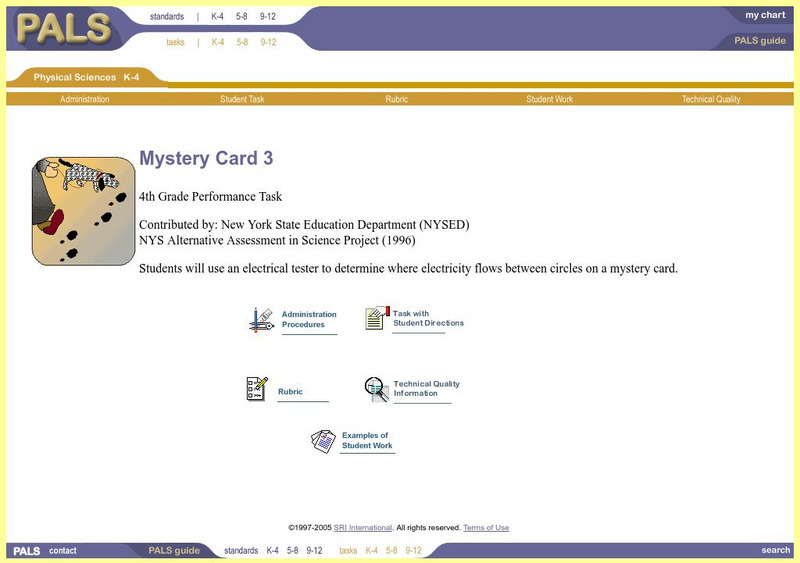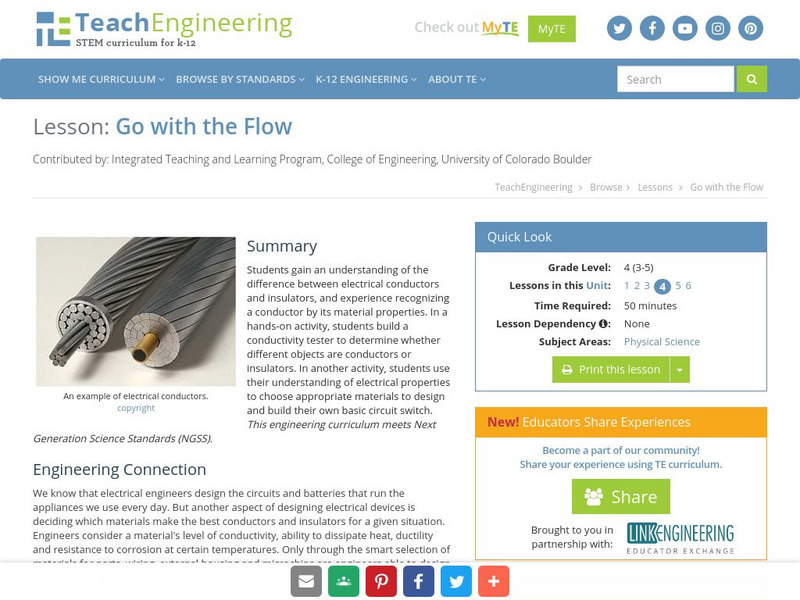Curated OER
Electromagnets
Learners conduct a series of experiments on electromagnets. In this physics lesson, students build their own electromagnet and explain how it works. They determine the factors that affect its strength.
Curated OER
Electromagnetic Bomb (E-Bomb)
Students explain how E-bomb works. In this physics lesson plan, students simulate the effects of e-bombs on electronic targets. They discuss its potential harmful effects when used as a weapon.
Curated OER
Cutting Corners - Parts 1 and 2
Learners use optimization concepts to design their own container. In this optimization lesson plan, students understand how the optimization concept is critical in calculus and why products are packaged the way they are.
Curated OER
Post-Civil War American History
Fifth graders examine significant events in Post-Civil War America. In this Post-Civil War lesson, 5th graders investigate the important events after the war in 19th century America. They read primary source documents about six topics...
Teach Engineering
Applications of Linear Functions
It's not so straightforward — lines can model a variety of applications. Pupils experience linear relationships within the context of science, including Hooke's and Ohm's Laws. Class members got a taste of motion and speed from the...
Curated OER
Examining a Microchip
In this computer technology lesson students investigate silicon microchips. Students explore microchip technology using a microscope. Lesson contains hands on investigations.
Curated OER
Water Monitoring Vocabulary
As the title implies, this is a list of vocabulary terms relating to water monitoring. If your ecology class is learning about how to test water quality, this will be an appropriate reference sheet for them. As a bonus, if you live in...
Curated OER
Junkyard Wars-Investigating More Electromagnets
Fourth graders conduct an investigation in order to determine a way to change the strength of an electromagnet's magnetic force. After conducting "control" lifts with their electromagnet, groups make initial changes, record data, and...
Curated OER
Processing the Future: Innovations in Computer Technology
Young scholars visit a website that takes them inside of a computer to see how it works. They investigate the people who contributed to computer technology.
Science Education Resource Center at Carleton College
Serc: Lighting the Way: Electrical Circuits and Lamp Wiring
Through a series of self-guided activities, students will explore basic electrical circuits and then build a working model of a circuit through the process of wiring a lamp. They will understand the flow of electrons through a circuit,...
TeachEngineering
Teach Engineering: From Sunlight to Electric Current
The lesson plan will first explore the concept of current in electrical circuits. Current will be defined as the flow of electrons. Photovoltaic (PV) cell properties will then be introduced. This will lead to the principle of...
SRI International
Performance Assessment Links in Science: Mystery Card 3
Straightforward introduction to electrical circuits using minimal materials and time. Students learn about the basics of electrical circuits by experimenting with "mystery cards" -- index cards with hidden aluminum foil used to conduct...
TeachEngineering
Teach Engineering: How Does a Robot Work?
This lesson introduces electricity, batteries and motors using a LEGO MINDSTORMS NXT robot. The associated activity guides students to build a simple LEGO NXT set-up and see the practical implementation of the concepts discussed. Before...
Science and Mathematics Initiative for Learning Enhancement (SMILE)
Smile: Simple Circuitry and Series Circuit
A teacher lesson plan which could be easily converted into an idea for a student project or presentation. This page describes an activity in which the basic nature of a circuit and the concepts of a series circuit are investigated....
PBS
Pbs Teachers: Affairs of the Heart: Mirrored Movements
Model endoscopic surgery by constructing and operating a tool that extends a person's grasping ability, explore dexterity skills using a basic electric circuit and then design and create an improved remote tool.
TeachEngineering
Teach Engineering: Go With the Flow
Students gain an understanding of the difference between electrical conductors and insulators, and experience recognizing a conductor by its material properties. In a hands-on activity, students build a conductivity tester to determine...















